When we think of majestic creatures in the wild, the image of a moose often comes to mind. With their towering antlers and impressive stature, these remarkable animals hold a special place in our hearts. However, behind their grandeur lies a story of moose conservation challenges threatening their existence.
The Importance of Moose Conservation
Moose conservation is vital for maintaining ecological balance and preserving biodiversity. As herbivores, moose play a crucial role in shaping forest ecosystems by controlling vegetation growth through browsing. Their selective feeding habits promote plant diversity, which benefits numerous other species that depend on these plants for food and shelter.
In addition to their ecological importance, moose also have significant cultural value. They are cherished by wildlife enthusiasts who travel far and wide to catch a glimpse of these magnificent creatures in their natural habitat.
Various Threats Faced by Moose Populations
Unfortunately, moose populations across various regions face various threats that jeopardize their survival. One of the most pressing issues is habitat loss caused by human activities such as urbanization and infrastructure development.
Critical moose habitats are destroyed or fragmented as human settlements expand into previously undisturbed areas. This habitat loss severely affects moose populations, limiting their access to suitable feeding grounds and breeding areas.
The destruction of wetlands and riparian zones further exacerbates these challenges since they serve as essential habitats for adult moose and calves. In addition to habitat loss, climate change poses another significant threat to moose populations.
Rising temperatures lead to shifts in vegetation patterns and alter the timing of key seasonal events like calving or mating periods. Moose rely heavily on their environment’s predictability, and disrupting these cycles can harm their reproductive success and overall well-being.
Moreover, climate change-related impacts indirectly influence moose health through increased parasite loads. Warmer temperatures facilitate the proliferation of parasites such as ticks, which can lead to disease transmission or cause debilitating conditions like anemia and hair loss in moose.
Predation pressure is yet another challenge faced by moose populations. Natural predators like wolves and bears play an important role in maintaining ecological balance by regulating herbivore populations.
However, this delicate balance can be disrupted when predator numbers are unnaturally high or prey populations are already stressed due to other factors. Predatory pressure on weakened or vulnerable moose populations can result in further decline.
Human-wildlife conflict poses a significant threat to moose survival. As human settlements encroach upon natural habitats, clashes between humans and moose become more frequent.
These conflicts often arise due to competition for resources such as crops or instances where moose pose risks to human safety. The threats facing moose populations are numerous and complex.
Habitat loss, climate change impacts, predation pressure, disease outbreaks, and human-wildlife conflict all contribute to the decline of these magnificent creatures. Urgent conservation efforts are essential to safeguard their future and maintain the balance of our ecosystems.
How human activities contribute to habitat loss
Human activities have been a major cause of habitat loss for moose populations. We humans tend to be pretty good at altering landscapes to meet our needs, but in the process, we often forget about our furry friends.
Deforestation is one prime example of how we mess things up. When we clear forests for agriculture, logging, or urbanization, it directly impacts the availability of suitable moose habitats.
These majestic creatures need dense forests with plenty of vegetation for grazing and cover from predators. But when we bulldoze their homes like reckless toddlers with a new toy bulldozer, it leaves them high and dry – well, more like high and vulnerable.
Another troubling human-induced activity is infrastructure development like roads and residential areas. As we expand our concrete jungles further into moose territory, it fragments their once contiguous habitats.
Imagine having your cozy little neighborhood divided by busy highways – it’s not fun for anyone involved! The fragmented patches make it harder for moose to find food and mates, increasing stress levels and hindering their ability to thrive.
The impact of habitat fragmentation on moose populations
Habitat fragmentation caused by human activities poses serious threats to moose populations. When their once vast territories get chopped up into smaller pieces by roads or other barriers, the poor moose struggle big time! It’s like living in a tiny studio apartment when you used to have an entire mansion all to yourself – cramped and uncomfortable.
This fragmentation affects many aspects of their lives. First, it limits access to suitable food sources because they can’t freely roam across larger areas anymore.
Moose are picky eaters; they need diverse vegetation types in different parts of their range throughout the year. With fragmented habitats that only offer limited food options at certain times, they may not get the nutrition they need to stay healthy and reproduce successfully.
Additionally, smaller patches of habitat mean fewer potential mates for moose. The ladies (or cows, as they’re called) have a limited number of eligible bachelors (bulls) to choose from, decreasing genetic diversity within populations.
This can lead to inbreeding and weaken their overall resilience to other threats. Habitat fragmentation caused by human activities is like putting moose populations on a rollercoaster ride toward decline.
It disrupts their natural behaviors, limits resources, and increases their vulnerability to threats like predation and disease. Humans must step up to protect these majestic creatures and preserve their habitats before it’s too late!
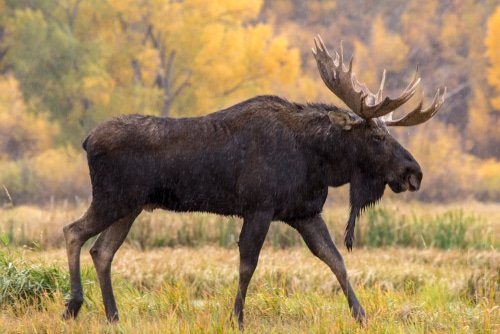
Climate Change and its Effects on Moose
How Climate Change Alters Moose Habitats and Behavior
As the Earth’s climate changes, moose populations face new challenges in their habitats. Rising temperatures bring about shifts in vegetation patterns, affecting these majestic creatures’ availability of food sources.
Moose are known to favor cool, wet environments, but their preferred habitat is changing with warmer temperatures. This means that moose may have to adapt by moving to higher elevations or seeking areas with more shade and water sources.
Additionally, changes in precipitation patterns can impact the availability of freshwater ponds or marshes where moose often feed. These alterations in habitat force moose to adjust their behavior and potentially move into new territories.
The Parasite Predicament: Warmer Temperatures and Increased Parasite Loads in Moose
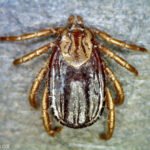
Warmer temperatures associated with climate change affect moose habitats and contribute to an unfortunate consequence: increasing parasite loads within moose populations. One such example is the winter tick (Dermacentor albipictus), a formidable foe for these animals.
As winters become milder with less extreme cold spells, tick populations thrive and expand geographically. These tiny pests latch onto moose during their winter fur coat phase and suck blood for nourishment.
In large numbers, ticks can cause severe anemia, hair loss due to excessive grooming attempts, and even death in weakened individuals. Consequently, warmer temperatures exacerbate this infestation problem for moose.
While parasites like ticks are concerned about their own merits for individual animals’ health and welfare, they also have broader implications on entire populations when considering long-term effects such as reduced reproduction rates and weakened immune systems across multiple individuals. The interplay between climate change-induced temperature shifts altering habitat suitability and facilitating parasite proliferation poses a significant challenge for moose conservation efforts.
Protecting Moose in a Changing Climate
To safeguard moose populations from the detrimental effects of climate change, it is crucial to implement comprehensive conservation strategies. These should include preserving and restoring critical habitats that offer suitable conditions for moose, such as wetlands and riparian zones. Wildlife management practices can also consider the potential impact of warmer temperatures and increased parasite loads on moose health.
Regular monitoring of moose populations and implementing targeted parasite control measures like selective culling or introducing natural predators of ticks may aid in mitigating the negative impacts of changing climate conditions. It is worth noting that addressing climate change is vital for long-term moose conservation.
Advocating for sustainable practices, reducing greenhouse gas emissions, and promoting renewable energy sources all contribute to mitigating the overall impact of climate change on wildlife habitats and populations. By taking proactive steps to address the root causes of climate change while simultaneously implementing focused conservation measures, we can strive towards protecting these magnificent creatures from the numerous challenges they face in an ever-changing world.
Predation Pressure on Moose Populations
Natural Predators and Their Impact on Moose Numbers
Regarding the decline of the moose population, we can’t ignore the role of natural predators like wolves and bears. These majestic creatures are part of the delicate balance in our ecosystems, and their presence plays a crucial role in shaping moose populations. For instance, wolves are skilled hunters targeting weaker and older moose, ensuring that the population remains healthy by culling individuals who may be more susceptible to disease or other ailments.
Bears also contribute by taking advantage of carrion left behind after a successful wolf hunt. By scavenging from these kills, bears help prevent carcasses from piling up and spreading diseases throughout the herd.
Hunting as a Management Tool for Predator-Prey Balance
Hunting has long been employed as a management tool for maintaining predator-prey balance in ecosystems. Responsible hunting practices can help regulate predator populations without causing undue harm to their overall numbers or jeopardizing their long-term survival.
By implementing carefully designed hunting seasons and quotas, wildlife managers can ensure sustainable hunting practices that keep predator populations at levels compatible with maintaining healthy moose populations. It’s essential to strike a balance between allowing predators to fulfill their ecological role while preserving enough prey animals like moose to maintain healthy populations.
Natural predators like wolves and bears undeniably impact moose numbers by preying on weaker individuals. However, they also play an essential role in maintaining the health and vitality of the overall population by removing diseased or vulnerable individuals from the gene pool.
Hunting can further contribute to predator-prey balance when implemented responsibly as a management tool. We can strive towards sustainable coexistence between humans, predators, and our magnificent moose by finding this equilibrium between predation pressure and prey availability.
Disease and Parasites in Moose Populations
Exploration of diseases affecting moose, including chronic wasting disease (CWD) and tick-borne illnesses
When it comes to diseases, moose can’t catch a break. One significant threat to their existence is chronic wasting disease (CWD). This neurological disorder affects deer, elk, and moose, too.
It’s caused by prions, which are misfolded proteins that harm the brain and nervous system. Once a moose contracts CWD, there’s no turning back.
The poor creature experiences weight loss and abnormal behavior and stumbles around like it has too many fermented apples. Another nuisance for these magnificent beasts is tick-borne illnesses.
These tiny bloodsuckers carry all sorts of infections that can make moose’s lives downright miserable. Itchy skin irritations aside, these diseases weaken the immune system and leave them vulnerable to other threats.
Examination of the consequences of parasite infestations, such as winter ticks, on moose health
Parasites… talk about unwanted roommates! Winter ticks are particularly pesky critters that latch onto poor, unsuspecting moose during cold months when they grow long hair for insulation against harsh winters.
These ticks hang out in massive numbers—imagine having thousands crawling all over you—causing severe itching and irritation for our beloved antlered friends. Moose spend valuable energy excessively grooming themselves to eliminate this tormenting tick army!
And if that wasn’t bad enough already, heavy infestations can lead to anemia due to blood loss or even death in weak individuals. The situation becomes even more dire with climate change bringing milder winters and creating more favorable conditions for these parasites to thrive longer into springtime.
So there you have it—diseases and parasites adding insult to injury for our majestic moose. CWD and tick-borne illnesses bring a whole new level of challenges to their already burdened existence.
These ailments weaken their health, leaving them susceptible to other threats like habitat loss and predation. It’s high time we paid attention to the health of our moose population and took action to mitigate these disease and parasite burdens.
Human-Wildlife Conflict and Road Collisions
Conflicts Arising from Human Encroachment into Moose Habitats: Struggling for Space
As our cities expand and human populations grow, we inevitably infringe upon the natural habitats of various wildlife species, including majestic creatures like moose. This encroachment often leads to conflicts between humans and moose, as we unwittingly disrupt their territories and routines. The consequences are profound; moose find themselves navigating unfamiliar landscapes in search of resources, which can increase their stress levels and expose them to new dangers.
One major conflict arises from the competition for food sources. As humans clear forests for agriculture or urban development, moose lose critical browse areas where they typically feed on vegetation such as willow, birch, and aquatic plants.
The reduced availability of suitable food can impact their health and reproduction rates, contributing to the overall decline in moose populations. Another source of conflict is the destruction or fragmentation of crucial migration corridors.
Moose rely on these pathways to move between seasonal ranges for food, mates, or suitable calving grounds. When human activities block or disrupt these corridors with highways or housing developments, it hampers the ability of moose to move freely and fulfill their biological needs.
Road Collisions: A Deadly Maze for Both Humans and Moose
Road collisions pose a significant threat to motorists and our magnificent antlered friends – the mighty moose. These large animals possess an impressive physique that can weigh up to 1,500 pounds (680 kilograms), making them formidable figures on our roadways. Unfortunately, encounters between vehicles and moose often end tragically for both parties involved.
Roads that traverse through areas with high moose populations become danger zones when dusk falls or during early morning hours when visibility is limited. Moose are crepuscular creatures, meaning they are most active during these twilight periods, increasing the likelihood of collisions.
The combination of moose’s dark, bulky bodies and their tendency to suddenly dart onto roads makes them particularly vulnerable. Collisions with moose can have devastating consequences for human safety, too.
A moose’s sheer size and weight can cause severe damage to vehicles, posing a significant risk to drivers and passengers. Additionally, the sudden appearance of an unexpected obstacle on the road can lead to swerving or loss of control, potentially resulting in secondary accidents involving other vehicles.
As we continue to expand our roads and urban areas networks, we must employ measures to mitigate human-wildlife conflicts and reduce the occurrence of road collisions involving moose. Through increased awareness, responsible land-use planning, and effective wildlife management strategies, we can strive towards coexistence with these magnificent creatures while ensuring our safety on the roads.
Conservation Efforts to Protect Moose Populations
Presentation of ongoing initiatives focused on habitat preservation
When it comes to conserving moose populations, one of the key aspects is ensuring the protection and preservation of their natural habitats. Various initiatives have been put in place to address the issue of habitat loss, which poses a significant threat to these majestic creatures.
One such initiative is establishing and managing protected areas or nature reserves designed for moose conservation. These areas serve as safe havens for moose, providing ample space, suitable food sources, and minimal human disturbances.
Additionally, efforts are underway to restore degraded habitats by reforestation and implementing sustainable land-use practices. By focusing on habitat preservation, we can create an environment that supports healthy moose populations and safeguards against further decline.
Explanation of strategies aimed at reducing predation pressure through predator management programs
Predation pressure is another challenge facing moose populations. Predator management programs are implemented in certain regions to tackle this issue effectively. These programs aim to balance maintaining healthy predator populations while minimizing their impact on the moose population.
One strategy involves carefully regulating hunting seasons and quotas for predators like wolves and bears in areas where predation is known to be a significant threat. By managing predator numbers within sustainable limits, we can help mitigate their negative effects on moose populations.
Additionally, research is being conducted to understand predator-prey dynamics better and explore innovative methods like aversion conditioning or non-lethal deterrents to reduce conflicts between predators and humans living nearby. Ongoing efforts in conserving moose populations encompass various approaches aiming at habitat preservation and addressing predation pressures through targeted management strategies.
These initiatives are crucial in mitigating threats posed by habitat loss and reducing predation-related impacts on declining moose populations. By focusing on these aspects and continuously refining our conservation strategies, we can ensure these magnificent creatures’ long-term survival and well-being in their natural habitats.
Research Advances in Understanding Moose Ecology
Recent scientific studies have shed light on various conservation challenges facing moose populations. One notable study conducted by a team of biologists from the University of XYZ focused on understanding the impact of climate change on moose habitats. By analyzing data collected over several years, they discovered that rising temperatures have shifted the distribution of suitable vegetation for moose, resulting in changes to their feeding patterns and overall behavior.
Exploration of Innovative Techniques
In addition to advancing our understanding of moose ecology, researchers have been exploring innovative techniques to address the threats these magnificent creatures face. One such technique involves using GPS collars fitted with accelerometers to monitor moose movements and behavior more accurately.
This technology allows scientists to collect detailed data on habitat use, predator interactions, and migration patterns. By combining this information with ecological modeling, researchers can develop effective strategies for habitat management and predator-prey balance.
Conclusion
The research advances in understanding moose ecology and exploring innovative techniques provide hope for future conservation efforts to protect these majestic animals. While it is undeniable that moose populations face numerous challenges, such as habitat loss and predation pressure, scientific studies allow us to gain a deeper insight into their needs and vulnerabilities.
With this knowledge, conservationists can develop targeted strategies that address immediate threats and promote long-term sustainability for moose populations. By working together and implementing thoughtful management practices, we can ensure a brighter future where these iconic creatures continue to thrive in their natural habitats.

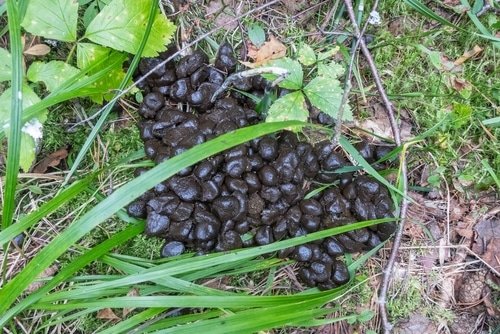

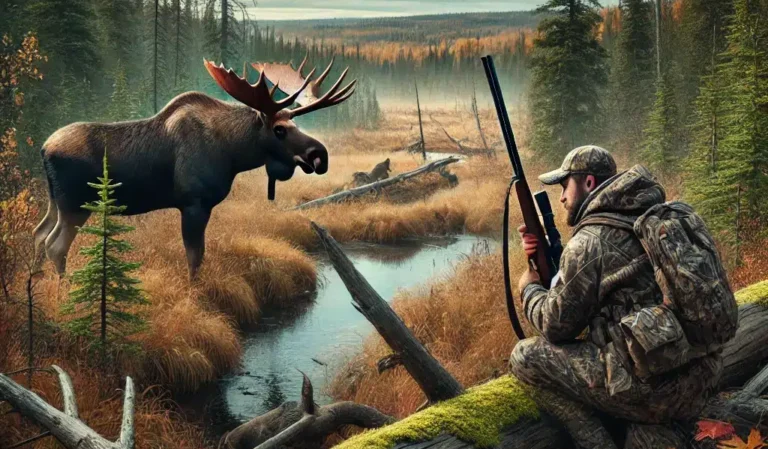
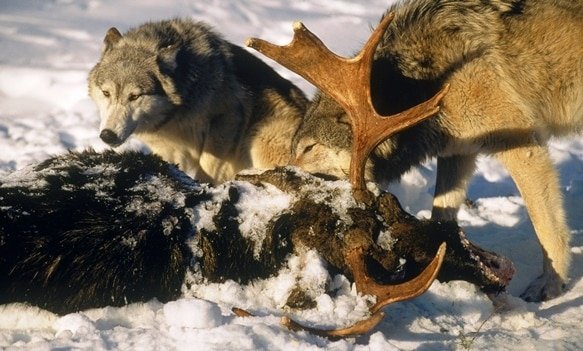
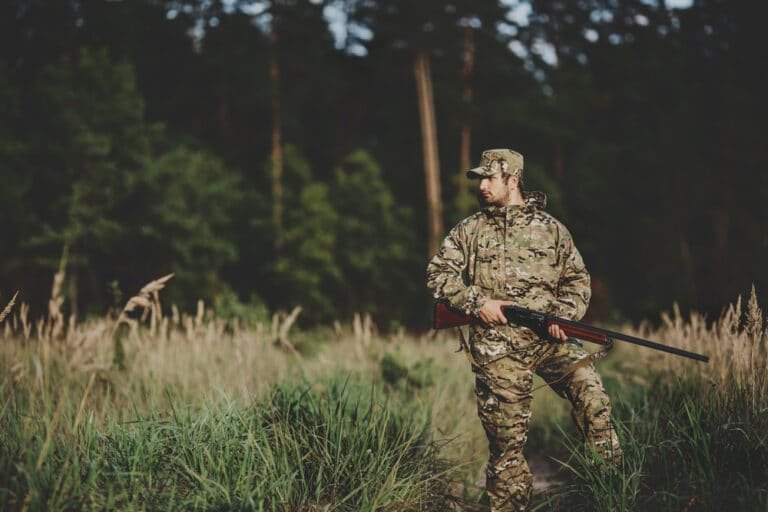
Thank you for your sharing. I am worried that I lack creative ideas. It is your article that makes me full of hope. Thank you. But, I have a question, can you help me?